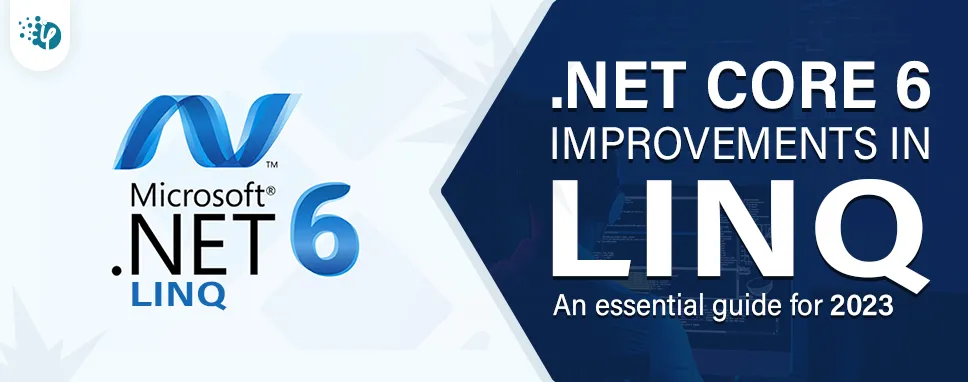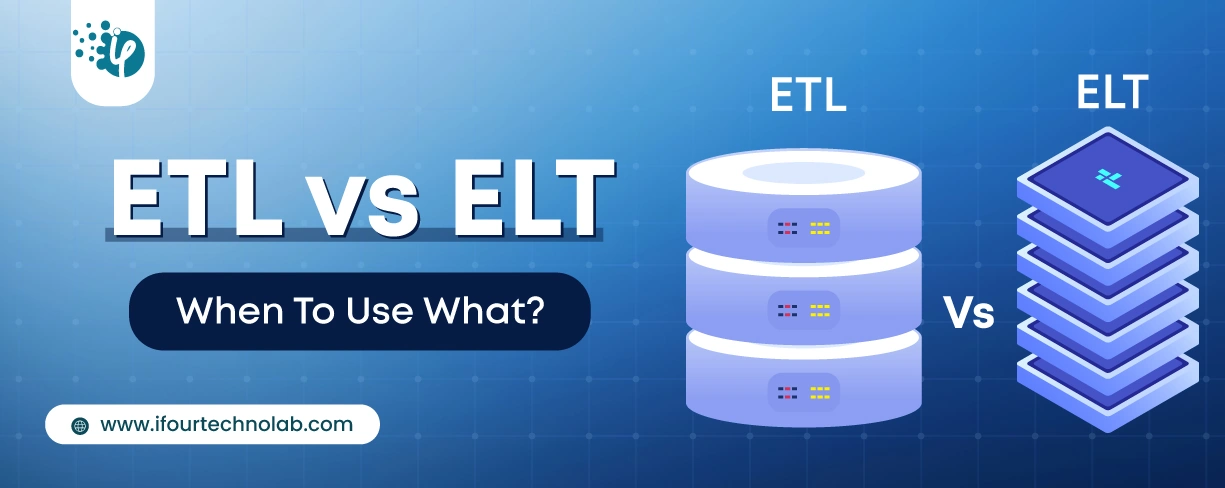How to Do Forecasting in Power BI (Steps & Accuracy Metrics)
Remember our last guide - Power BI forecasting? It revealed things that truly blocks accuracy, both structural and situational. Now it's time to take the next step. Knowing Power...
Listening is fun too.
Straighten your back and cherish with coffee - PLAY !

Microsoft launched the .NET framework 3.5 in 2007, which offered a tremendous feature called 'Language Integrated Query'. This has completely changed the style of .NET development by shortening development time. LINQ simplifies functionality and allows developers to query database objects and collections using arrow functions using libraries such as Entity Framework Core.
The frequent improvements to LINQ enable great capabilities that were previously unimaginable. The same goes with the upcoming release of .NET 6 which comes with really interesting LINQ capabilities.
Before we get into details of .NET Core 6 LINQ updates, let’s look at the essentials of LINQ and .NET Core 6.
The new .NET Core 6 is a free, open-source platform with extraordinary capabilities. These capabilities simplify bespoke software development and allow to create a variety of applications including websites, desktop apps, mobile apps, Microservices, APIs, gaming apps, cloud services, and even IoT-based ones. The framework supports cross-platform interoperability and is quick, lightweight, and flexible.
The .NET unification that began with .NET 5 is now complete with .NET 6, which can be used for a variety of platforms including web development and cloud application development, Desktop, IoT, and Mobile app development.
Let understand what is .NET core 6 and what new features are added by Microsoft.
Fig: .NET – a unified development platform
The ecosystem offers,
This is how .NET 6 works, how it is used, and how Microsoft built it. Next, we'll look at LINQ and how it is used, as well as how .NET Core 6 has improved LINQ.
The acronym for LINQ is ‘Language Integrated Query’. With fabulous integration capabilities, it helps to provide access to queries directly into the C# language.
The following command adds the NuGet package for LINQ once the project has been successfully built with the necessary class libraries in .NET Core.
Adding LINQ NuGet package on .NET Core
The above screenshot is from Ubuntu OS. However, the command remains the same for the Windows OS as well.
The command to run in the CLI is
When the installation of the package is finished, open the .csproj file and you'll find that an item package has been added.
Next, you need to add a reference to “System.Linq;” Namespace for the .cs file.
Now try to run the following code:
using. System;
using.System.Linq;
namespace CSharpSampleProjects
{
Class Program
{
Static void Mai(string [] args)
{
Int[] arr={1,2,3};
Var query = arr.Select()n => n*10;
For each(var item in query)
{
Console,writeLine(item);
}
}
}
}
Output
Objects are responsible for connecting to data access components - called the Data Access Layer (DAL). Here we must consider three points:
LINQ will be fully integrated with the next release of Visual Studio (code-name: Orcas) and will include some very cool framework and tool support (including full IntelliSense and designer support).
The LINQ team published the CTP drop of LINQ recently, which works well with Visual Studio 2005 and enables you to start learning about it right away.
The Enumerable.FirstOrDefault to a method returns a sequence's first element, or a default value if there are no items in the sequence. You can also override the default value for the SingleOrDefault and LastOrDefault methods.
List list1 = new() { 1, 2, 3 };
int item1 = list1.FirstOrDefault(i => i == 4, -1);
Console.WriteLine(item1); // -1
List list2 = new() { "Item1" };
string item2 = list2.SingleOrDefault(i => i == "Item2", "Not found");
Console.WriteLine(item2); // Not found
With the launch of the new Enumerable.chunk extension method in .NET Core 6, you are no longer required to implement the requirement to divide elements of the sequence into chunks.
IEnumerable numbers = Enumerable.Range(1, 505);
IEnumerable chunks = numbers.Chunk(100);
foreach (int[] chunk in chunks)
{
Console.WriteLine($"{chunk.First()}...{chunk.Last()}");
}
// Output:
// 1...100
// 101...200
// 201...300
// 301...400
// 401...500
// 501...505
Another crucial feature that gets added in .NET Core 6 is the new Enumerable.By* methods. It makes use of a 'key selector' and compares elements for further process.
Take a look at the new methods listed below.
List products = new()
{
new() { Name = "Product1", Price = 100 },
new() { Name = "Product2", Price = 5 },
new() { Name = "Product3", Price = 50 },
};
Product theCheapestProduct = products.MinBy(x => x.Price);
Product theMostExpensiveProduct = products.MaxBy(x => x.Price);
Console.WriteLine(theCheapestProduct);
// Output: Product { Name = Product2, Price = 5 }
Console.WriteLine(theMostExpensiveProduct);
// Output: Product { Name = Product1, Price = 100 }
record Product
{
public string Name { get; set; }
public decimal Price { get; set; }
}
The three-way zip method (Enumerable.Zip extension method) produces the tuple with the element from the two given sequences. Now, with .NET 6 developers can combine tuples from three sequences and send them to the extension method.
int[] numbers = { 1, 2, 3, 4, };
string[] months = { "Jan", "Feb", "Mar" };
string[] seasons = { "Winter", "Winter", "Spring" };
var test = numbers.Zip(months).Zip(seasons);
foreach ((int, string, string) zipped in numbers.Zip(months, seasons))
{
Console.WriteLine($"{zipped.Item1} {zipped.Item2} {zipped.Item3}");
}
// Output:
// 1 Jan Winter
// 2 Feb Winter
// 3 Mar Spring
The new unary to the prefix "hat" operator () is supported by the C# compiler thanks to the introduction of the Index struct in .NET Core 3.0. Now, in .NET 6, Enumerable.ElementAt method would be used to index “from the end” of the collection.
IEnumerable numbers = new int[] { 1, 2, 3, 4, 5 };
int last = numbers.ElementAt(^0);
Console.WriteLine(last); // 5IEnumerable numbers = new int[] { 1, 2, 3, 4, 5 };
int last = numbers.ElementAt(^0);
Console.WriteLine(last); // 5
In .NET Core 3.0, Range support for the struct was added. The function is used by the C# compiler to support the range operator "..". To support the range, .NET 6 makes use of a “Range struct” while code implementation.
IEnumerable numbers = new int[] { 1, 2, 3, 4, 5 };
IEnumerable taken1 = numbers.Take(2..4);
foreach (int I in taken1)
Console.WriteLine(i);
// Output:
// 3
// 4
IEnumerable taken2 = numbers.Take(..3);
foreach (int i in taken2)
Console.WriteLine(i);
// Output:
// 1
// 2
// 3
IEnumerable taken3 = numbers.Take(3..);
foreach (int i in taken3)
Console.WriteLine(i);
// Output:
// 4
// 5
The .NET 6 introduces a new Enumerable.TryGetNonEnumerated to the method. It tries to determine the number of elements in the sequence without forcing an enumeration. This method can be used with IQueryable while calling Enumerable.Count that you don't want to evaluate the entire query.
IEnumerable numbers = GetNumbers();
TryGetNonEnumeratedCount(numbers);
// Output: Could not get a count of numbers without enumerating the sequence
IEnumerable enumeratedNumbers = numbers.ToList();
var test = enumeratedNumbers.ElementAt(-1);
TryGetNonEnumeratedCount(enumeratedNumbers);
// Output: Count: 5
void TryGetNonEnumeratedCount(IEnumerable numbers)
{
if (numbers.TryGetNonEnumeratedCount(out int count))
Console.WriteLine($"Count: {count}");
else
Console.WriteLine("Could not get a count of numbers without enumerating the sequence");
}
IEnumerable GetNumbers()
{
yield return 1;
yield return 2;
yield return 3;
yield return 4;
yield return 5;
}
Every version of the .NET framework has included some incredible features and libraries. The same goes with .NET Core 6 as well. The continuous LINQ updates have greatly streamlined web development and enabled amazing potential. Not just that, but these .NET 6 community-driven features will assist developers in reducing code and enhancing code quality.
In this blog, we discussed the anticipated improvements to LINQ in the .NET Core 6, and how will it simplify the software development process.

Remember our last guide - Power BI forecasting? It revealed things that truly blocks accuracy, both structural and situational. Now it's time to take the next step. Knowing Power...

It's amazing to see how Data teams today are racing ahead - moving from traditional warehouses to cloud-native platforms, lakehouses, and real-time architectures. But in this rush,...

Think about the last time CTOs spent most of their time fixing old systems. Updates were slow, servers were expensive, and adding new features took time. Now, things have changed....